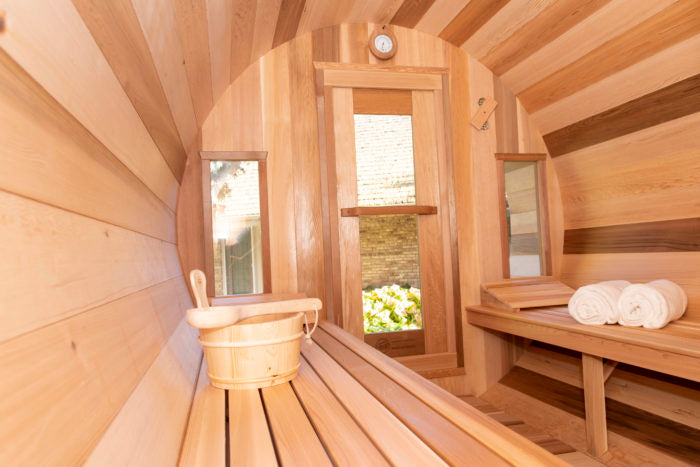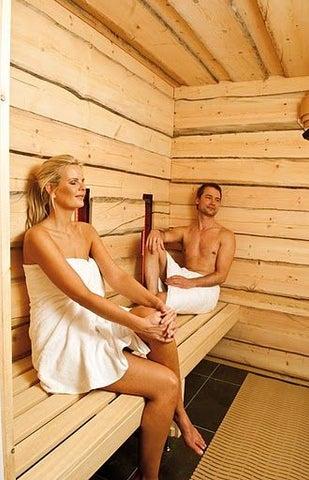Excitement About Traditional Sauna
Table of Contents3 Simple Techniques For Traditional SaunaTraditional Sauna Fundamentals ExplainedTraditional Sauna Can Be Fun For EveryoneEverything about Traditional SaunaTraditional Sauna - Truths
Most of the weight shed in a sauna is water loss and is re-gained upon rehydrating. Without a doubt sauna can be a vital part of a healthy and balanced weight loss program. To take a look at the differences in between standard and IR saunas, I will divide these into proven, academic, and fabricated differences.Thus, the hottest factor in the saunawhich goes to the ceiling directly over the sauna heateris commonly in between 185 and 190 F. Claims that a standard sauna exceeds 200 F is simply not true and not appropriate for electric saunas sold in the US. The temperature for a far-infrared sauna is usually set in between 120 and 140 F; however, unlike the conventional sauna, the goal in and IR room is not to attain a high temperature level.

When a standard sauna has been properly heated, the sauna walls are warm, the air temperature level has actually attained established temperature and the rocks are very warmed. As a fascinating side note, the heated walls and the rocks are releasing far-infrared heat, integrated with the warmed air, to produce an "wrapping up warmth".
5 Easy Facts About Traditional Sauna Explained
When the heat is attained, the aspects cycle on and off to preserve the high temperature. Many standard sauna customers delight in putting water over the rocks to create vapor to raise sauna humidity degrees. The advantages of putting water over the rocks consist of: making the space a lot more comfortable, moistening the nasal flows, and allowing the use of aromatherapy by mixing essential oils with the water.

When the power gets in the body, it creates the body temperature to enhance and eventually results in sweat. In an infrared sauna it is very important for the emitters/heaters to continue to be on virtually frequently. Because there is no mass of rocks to retain warm, the sauna will cool if the emitters closed off.
Our Traditional Sauna Diaries
As mentioned above, the sauna bather in an infrared area wishes to position himself before running emitters to obtain optimal take advantage of the warmth. The home heating time for both areas can be extremely various, depending on just how the spaces are made use of. For a traditional sauna, a bather should allow 30-40 minutes for the area to achieve a wanted temperature and to properly pre-heat the rocks.

A well created sauna will typically attain a temperature level of 150-160 F in concerning 30-40 minutes. For hotter temperature levels, the room might need to warmth for a longer duration.
To some, 15 minutes was "squandered" while the infrared power heated up the timber panels as opposed to warming a body, while others discover a pre-heated space to be extra comfortable and believe an elevated starting temperature is essential to begin sweating. The length of suggested use for each room is approximately the content very same (10-15 mins per session); however, as a result of the lower air temperature levels and the capacity to feel the impacts of infrared heat quicker than a standard sauna, it is look at this web-site not unusual for an individual to invest a total of 20-30 mins in an infrared sauna.
Traditional Sauna Things To Know Before You Get This

The typical cost per kWH of electricity in the U.S. is approximately $0.11, so a 4.5 kW heating unit will cost approximately $.50 to run for one hour, if the heating system runs continuously for one hour. Commonly a sauna heating unit will certainly compete 75% of the very first hour and 50% of succeeding hours on given that the elements cycle once the set temperature level is attained.
A two person far-infrared room is generally literally other smaller sized than a traditional sauna, commonly concerning 4' x 4' or smaller. The IR heater is usually 1.5-1.7 kW utilizing a 120 volt 15 amp plug-in solution. Since the room can be used sooner than a sauna room, we will certainly presume the room is utilized for to of an hour including warm up time.
There is a rarely discussed difference in the social experience in between the 2 areas. While our society has actually shed several of the social benefit of the conventional sauna experience, it can be really socially rewarding (Traditional Sauna). From family members time in the sauna, to heart-felt conversations with considerable others, to sauna partiesthe conventional sauna experience can cause intimate interacting socially
An Unbiased View of Traditional Sauna
The majority of greater end infrared rooms include colored light therapy, audio systems and full-glass fronts. The size of most spaces enable 2 individuals to pleasantly use the space, while some designs may enable a 3rd or 4th person to use the room. Custom-made infrared spaces are also offered, with room sizes available as much as 7' x 8' x 7' high.